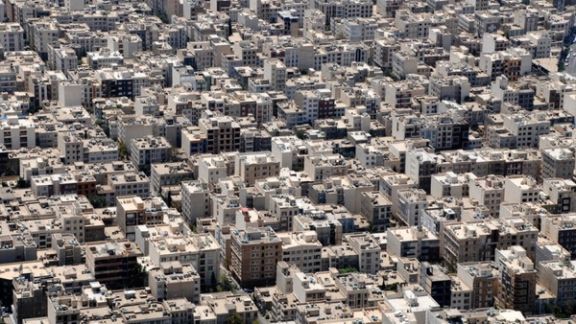Homeownership Impossible In Tehran As Quality Of Life Drops

Owning a home in the Iranian capital Tehran has become virtually impossible while the key indicators of the quality of life are also in decline.

Owning a home in the Iranian capital Tehran has become virtually impossible while the key indicators of the quality of life are also in decline.
Iran's leading economic daily Donyaye Eqtesad (World of Economy) published an article Saturday listing a plethora of problems facing the residents of the capital.
The average time people needed to save money to be able to buy a residence in Tehran has increased to a staggering 112 years, from about 22 years in 2005. According to Donyaye Eqtesad, the period of time for those born since late 1990s -- the so-called generation Z -- is now estimated to be 200 years.
Economist Hassan Mansour told Iran International that the Housing Affordability Index is about four to 10 years in England, where housing prices are among the most expensive in the world. “This means there is no hope for Iranians to own a home,” he noted.
Last week, Mohsen Pirhadi, the vice-chairman of the parliamentary committee for Iran’s Seventh National Development Plan, said the government plans to reduce the timespan to 12 years in the next development plan. Despite launching seven development plans since the 1980s, to continue building infrastructure, establishing key industries, and expanding public services and education, which were fast expanding during the monarchy, Iran still remains classified as a developing country, with an average economic growth rate of only 2.5 percent during the Islamic Republic.

Donyaye Eqtesad released the new data after Tehran's city council members held a meeting with officials of the municipality and experts to mull over a comprehensive plan for the capital, comparing the current indicators about the city with those of 2005. Three major indicators of "quality of life" in Tehran have significantly deteriorated since then, with affordable housing, air pollution and urban decay being the main issues.
Amir Mansouri, a professor at the Faculty of Architecture at the University of Tehran, said during the meeting that "We live in a city where half of the population is in danger of devastating earthquakes, the price per square meter of housing exceeds 600 million rials (approximately $1,300), and ordinary people can no longer afford to buy a home in this city, even renting a place in some neighborhoods has become impossible.” The monthly minimum take-home pay (without benefits) is around $120.
Earlier reports in mid-2022 indicated that there was a more than 300 percent rise in rents in Tehran in a matter of three years. And figures released in December 2021, some six months after Ebrahim Raisi took office as President indicated that food and housing expenses had risen between 300 to 740 percent during the preceding six years while wages went up by around only 270 percent during the same period. A prominent economist, Hossein Raghfar, said earlier this year that high rents in Tehran have pushed many tenants to the less expensive margins of the capital where a new social sub-class is taking shape, with some people having chosen to live in makeshift houses built on some of Tehran's rooftops.
According to a report by reformist daily Shargh earlier this week, the Iranian government has exerted pressure on real estate advertising platforms to keep property prices hidden. The newspaper also noted that for the past eight months, the government has refrained from disclosing housing market data on the official portals of the Iranian Statistical Center and the Central Bank.
Mansouri added that the residents of the capital are exposed to polluted air for more than 200 days a year. Tehran has been logged as the most polluted city in the world for at least several days per year. The capital’s pollution is mainly blamed on poor government policies, desertification and low water levels, as well as climate change that has intensified sandstorms.
Moreover, the usage of highly polluting diesel and mazut fuels in power plants -- instead of natural gas -- jumped in Iran in 2021 on top of increases in previous years. Mazut -- commonly called waste oil -- is a heavy, low quality fuel oil, only used when the facilities to blend or break it down into more conventional petrochemicals such as diesel are not available.
Iran has the world’s second largest natural gas deposits but is unable to boost production because it lacks capital and Western technology. It needs to invest $40 billion in modernizing and expanding its gas fields, but most are in the Persian Gulf and need Western technology. Due to its anti-West foreign policy and an expanding nuclear program, Iran is under US sanctions and cannot borrow money or technology from the West.